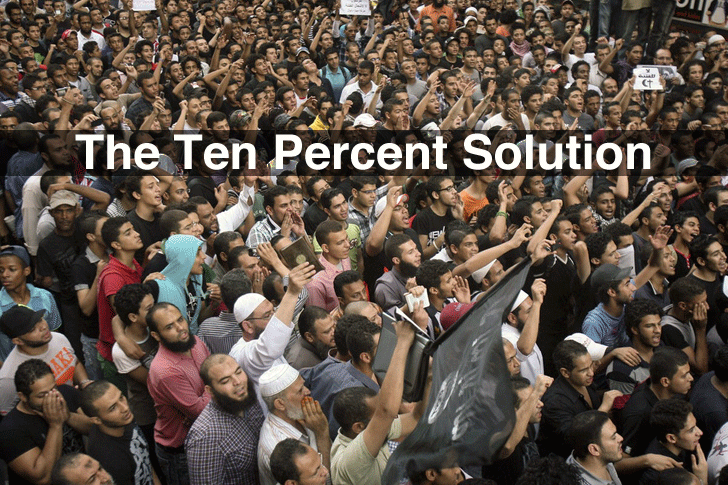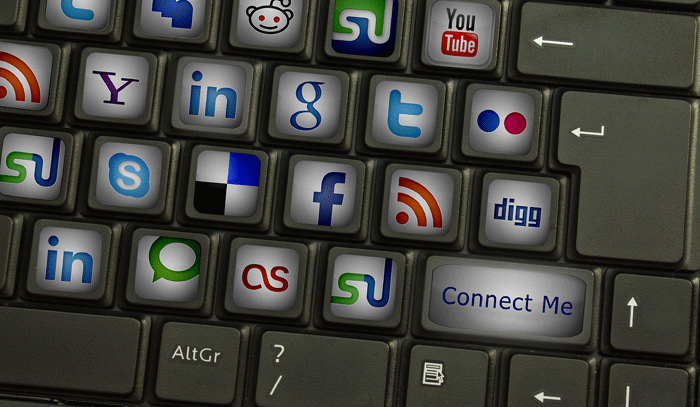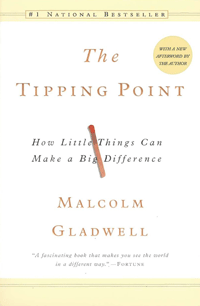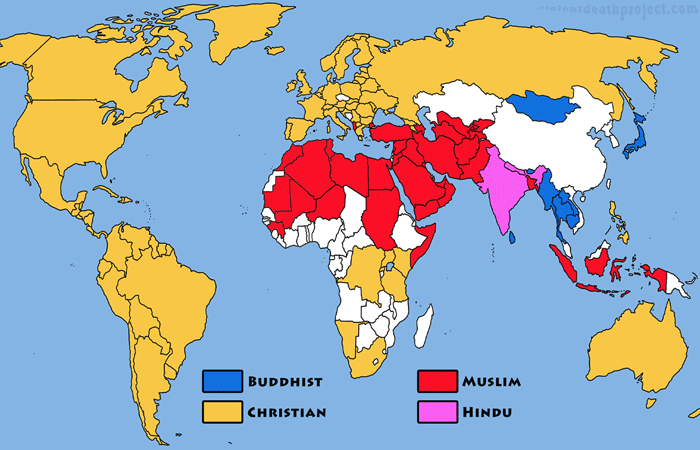

Do you ever wonder how the so-called "Arab Spring" came about? How about the sudden rise in popularity of Donald Trump or Bernie Sanders? On a more local and personal level, how about the decision to fluoridate your drinking water even though the FDA has declared it a poison... how did that gain so much "public" support?
The most widely held public beliefs have often been wrong, yet we only can admit this in hindsight. The belief that Iraq had weapons of mass destruction and was somehow responsible for the 911 attacks on the World Trade Center and the Pentagon are excellent examples of beliefs, held by a majority of people at the time, that all started with a small minority whose ideas, however motivated, were unchanged and unshakable.
How many people in this small minority are required to convince the majority that their ideas are wrong, and that the new ideas are right? The surprising answer is just 10 percent!
Just 10% will do it!
Scientists at Rensselaer Polytechnic Institute have found that when just 10 percent of the population holds an unshakable belief, their belief will always be adopted by the majority of the society.
The scientists, who are members of the Social Cognitive Networks Academic Research Center (SCNARC) at Rensselaer, used computational and analytical methods to discover the "tipping point" where a minority belief becomes the majority opinion. The finding has implications for the study and influence of societal interactions ranging from the spread of innovations to the movement of political ideals.
According to distinguished professor and SCNARC Director Boleslaw Szymanski:
"When the number of committed opinion holders is below 10 percent, there is no visible progress in the spread of ideas. It would literally take the amount of time comparable to the age of the universe for this size group to reach the majority. Once that number grows above 10 percent, the idea spreads like flame."
Using the so-called Arab Spring events in Libya, Tunisia and Egypt as an example, Szymanski shows how this process worked.
"In those countries, dictators who were in power for decades were suddenly overthrown in just a few weeks."
Of course, the process may not always work in the direction many would prefer. The whole Arab Spring is the best example. So although the requirements are surprisingly minimal and easily achieved, the outcome is as unpredictible as human nature. And because we are dealing with a crowd mentality rather than individuals, the consequences can be quick and dramatic.
These findings were published in the online edition of the journal Physical Review E in an article titled "Social consensus through the influence of committed minorities" and its relevance should alarm those watching the current world events unfold.
According to a review of the work in Psychology & Sociology, an important aspect of the finding is that the percent of committed opinion holders required to shift majority opinion does not change significantly regardless of the type of network in which the opinion holders are working. In other words, the percentage of committed opinion holders required to influence a society remains at approximately 10 percent, regardless of how or where that opinion starts and spreads in the society -- from the top down or from the grass roots upward.
 To reach their conclusion, the scientists developed computer models of various types of social networks. One of the networks had each person connect to every other person in the network. The second model included certain individuals who were connected to a large number of people, making them opinion hubs or leaders. The final model gave every person in the model roughly the same number of connections. The initial state of each of the models was a sea of traditional-view holders. Each of these individuals held a view, but were also, importantly, open minded to other views.
To reach their conclusion, the scientists developed computer models of various types of social networks. One of the networks had each person connect to every other person in the network. The second model included certain individuals who were connected to a large number of people, making them opinion hubs or leaders. The final model gave every person in the model roughly the same number of connections. The initial state of each of the models was a sea of traditional-view holders. Each of these individuals held a view, but were also, importantly, open minded to other views.
Once the networks were built, the scientists then "sprinkled" in some true believers throughout each of the networks. These people were completely set in their views and unflappable in modifying those beliefs. As those true believers began to converse with those who held the traditional belief system, the tides gradually and then very abruptly began to shift.
According to researcher and author, Sameet Sreenivasan,
"In general, people do not like to have an unpopular opinion and are always seeking to try locally to come to consensus. We set up this dynamic in each of our models."
To accomplish this, each of the individuals in the models "talked" to each other about their opinion. If the listener held the same opinions as the speaker, it reinforced the listener's belief. If the opinion was different, the listener considered it and moved on to talk to another person. If that person also held this new belief, the listener then adopted that belief.
"As agents of change start to convince more and more people, the situation begins to change. People begin to question their own views at first and then completely adopt the new view to spread it even further. If the true believers just influenced their neighbors, that wouldn't change anything within the larger system, as we saw with percentages less than 10."
The research has broad implications for understanding how opinion spreads. Co-author of the paper, Gyorgy Korniss, said:
"There are clearly situations in which it helps to know how to efficiently spread some opinion or how to suppress a developing opinion. Some examples might be the need to quickly convince a town to move before a hurricane or spread new information on the prevention of disease in a rural village."
But other, more realistic uses of this process, may be to convince those opposed to certain interests to react with continued, unstoppable and escalating violence. Perhaps we are already seeing this happen.
Social media is a very powerful factor
Researchers tested the process on populations with "open minds".

Although the research was conducted on a theoretical network, today's computerized social networks have speeded up the process of communication to the point where new ideas "go viral" and spread in hours, not months or years. So the findings are even more important when the internet is involved.
The "Tipping Point"
In his book, Tipping Point, Malcolm Gladwell recognizes that social change requires the work of only a few people who can motivate others to action. He describes them as follows:
![]() Connectors, are the people in a community who know large numbers of people and who are in the habit of making introductions. A connector is essentially the social equivalent of a computer network hub. They usually know people across an array of social, cultural, professional, and economic circles, and make a habit of introducing people who work or live in different circles. They are people who "link us up with the world ... people with a special gift for bringing the world together." They are "a handful of people with a truly extraordinary knack [... for] making friends and acquaintances". Gladwell characterizes these individuals as having social networks of over one hundred people.
Connectors, are the people in a community who know large numbers of people and who are in the habit of making introductions. A connector is essentially the social equivalent of a computer network hub. They usually know people across an array of social, cultural, professional, and economic circles, and make a habit of introducing people who work or live in different circles. They are people who "link us up with the world ... people with a special gift for bringing the world together." They are "a handful of people with a truly extraordinary knack [... for] making friends and acquaintances". Gladwell characterizes these individuals as having social networks of over one hundred people.
 To illustrate the Connectors, Gladwell cites the following examples: the midnight ride of Paul Revere, Milgram's experiments in the small world problem, the "Six Degrees of Kevin Bacon" trivia game, Dallas businessman Roger Horchow, and Chicagoan Lois Weisberg, a person who understands the concept of the weak tie. Gladwell attributes the social success of Connectors to the fact that "their ability to span many different worlds is a function of something intrinsic to their personality, some combination of curiosity, self-confidence, sociability, and energy."
To illustrate the Connectors, Gladwell cites the following examples: the midnight ride of Paul Revere, Milgram's experiments in the small world problem, the "Six Degrees of Kevin Bacon" trivia game, Dallas businessman Roger Horchow, and Chicagoan Lois Weisberg, a person who understands the concept of the weak tie. Gladwell attributes the social success of Connectors to the fact that "their ability to span many different worlds is a function of something intrinsic to their personality, some combination of curiosity, self-confidence, sociability, and energy."
![]() Mavens are "information specialists", or "people we rely upon to connect us with new information." They accumulate knowledge, especially about the marketplace, and know how to share it with others. Gladwell cites Mark Alpert as a prototypical Maven who is "almost pathologically helpful", further adding, "he can't help himself". In this vein, Alpert himself concedes, "A Maven is someone who wants to solve other people's problems, generally by solving his own". According to Gladwell, Mavens start "word-of-mouth epidemics" due to their knowledge, social skills, and ability to communicate. As Gladwell states, "Mavens are really information brokers, sharing and trading what they know".
Mavens are "information specialists", or "people we rely upon to connect us with new information." They accumulate knowledge, especially about the marketplace, and know how to share it with others. Gladwell cites Mark Alpert as a prototypical Maven who is "almost pathologically helpful", further adding, "he can't help himself". In this vein, Alpert himself concedes, "A Maven is someone who wants to solve other people's problems, generally by solving his own". According to Gladwell, Mavens start "word-of-mouth epidemics" due to their knowledge, social skills, and ability to communicate. As Gladwell states, "Mavens are really information brokers, sharing and trading what they know".
![]() Salesmen are "persuaders", charismatic people with powerful negotiation skills. They tend to have an indefinable trait that goes beyond what they say, which makes others want to agree with them. Gladwell's examples include California businessman Tom Gau and news anchor Peter Jennings, and he cites several studies about the persuasive implications of non-verbal cues, including a headphone nod study (conducted by Gary Wells of the University of Alberta and Richard Petty of the University of Missouri) and William Condon's cultural microrhythms study.
Salesmen are "persuaders", charismatic people with powerful negotiation skills. They tend to have an indefinable trait that goes beyond what they say, which makes others want to agree with them. Gladwell's examples include California businessman Tom Gau and news anchor Peter Jennings, and he cites several studies about the persuasive implications of non-verbal cues, including a headphone nod study (conducted by Gary Wells of the University of Alberta and Richard Petty of the University of Missouri) and William Condon's cultural microrhythms study.
[source]

Islam accounts for 22% of Global population
While Islam comprises 22% of the worlds population (Christians make up 33%), they reside in countries that have strategic significance and vital resources to America -- like oil and the fiat base of the US dollar. Violence or war in those regions would cripple America and our currency. Perhaps that is enough reason for some to be very moderate with Islamic terrorism, promoted by Saudi Arabian Sunni jihadists. Certainly the Obama and Clinton approach seems to bare this out.
|
France joins in the conflict We all remember the 130 citizens who were murdered by Islamic jihadists in Paris. This organized act of terror erupted after the Islamic community in France was subjected to what they interpreted as a existential threat. Adding to the furor over depicting the prophet Mohammed (PBUH), French Prime Minister Jean-Marc Ayrault outlawed any right to assemble in protests in France and mustered extra police to prevent and expression of disapproval of the film, "The Innocence of Muslims" in his country. This proclamation was made at the same time that a French magazine, Charlie Hebdo, published cartoons featuring a figure resembling the Prophet Mohammed naked in an issue that hit newsstands Wednesday, September 19th (2012). Depicting Islam's prophet is considered blasphemy, depicting him naked illustrates the contempt that the artist and magazine have for followers of Islam and will surely convince world Muslims that their religion is now under attack by the Christian world. Their reaction to this was, in retrospect, easy to predict. It is likely that the 10% threshhold was reached a long time ago in many civilized countries. |
There are 2,013,620,000 devout believers of Islam in the world. The foundation of Islam is sharia law which is in direct conflict with Western civilization's ideals of equality and freedom of all people. Islam is not going away and neither is the goal is for an Islamic World under sharia law. Has this belief captured 10% of the Islamic faith?

COMMENTS:
The ten percent thing is an interesting finding, but as far as Islamists rising up in the world against the Christians, this was precipitated on 9-11 by the U.S government, in concert with Israel, in order that Israel's woes could be spread around and absorbed by more people. It's fascinating to watch while these people (Jewish Israel and American proxies) whip the world into a frenzy of world war. It's amazing that surely they are smart enough to realize what such a war would mean, even to themselves, and are still going through with it. That's faith in one's religion, for sure. That's like being so true to one's Christian religion that one is willing to nail oneself to a tree and remain that way until one dies. This all means that religion is the most dangerous thing in the world.
Bob